Project Management and Tasks
Bitrix24 has extensive organizational features which enhance efficiency at the personal and group levels. Tasks can be defined for oneself or assigned to a colleague, or delegated after being received. Project management features of the product are imbedded in the ‘groups’.
Any project can have a dedicated group where all of the files, discussions, and tasks pertaining to that project are stored and accessed only by those users who are relevant to the project. Time spent on each task within the project can be tracked, and tasks are integrated into the group calendar. Furthermore, projects can be created in the Extranet, so clients or partners can participate fully in them.
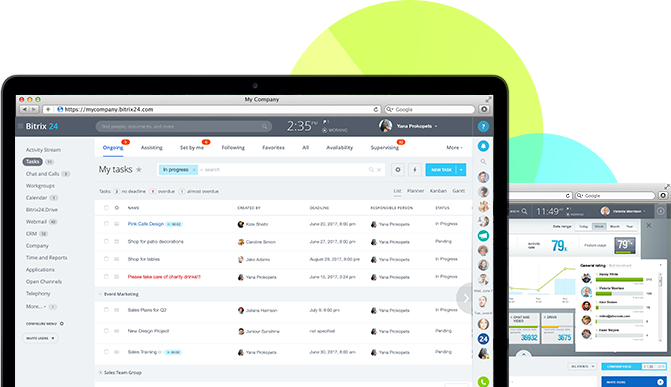
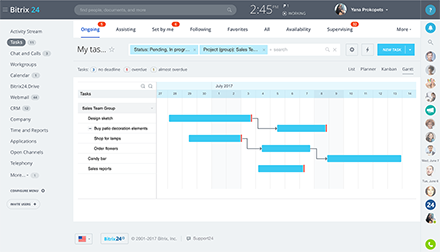
Gantt Chart
Tasks and subtasks can be viewed in a Gantt chart with status, responsible person, and chronological relationships. This gives a full picture of the progression of the project at a single glance, and helps identify potential or existing delays. Once a task is created, it can still be modified directly from the table or Gantt chart.
Bumping up a deadline, adding a subtask, and any other change can be made quickly, with automatic notifications going out to all involved.
Employee Workload Management in tasks
The employee workload planning in project management let you finish more tasks on time and identify which ones are getting dangerously close to being overdue. Supervisors can allocate how much time should be spent on each task and then track actual time spent completing them. Monthly reports on time spent on tasks for each department and each employee are available
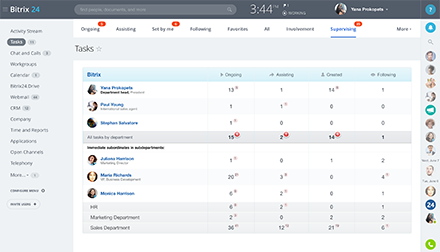
Counters and roles
Task counters help you keep the tasks which require immediate attention in mind. The counter indicates that you or one of your colleagues has a task with some problem or is incompletely assigned (overdue, not evaluated after completion, or no deadline stated, etc.).
Counters and roles simplify supervisors’ work, since they can pull up a graphic showing tasks and their statuses for departments, groups, or individual employees.
Checklist
Add a checklist to a task and follow the progress point-by-point. This is very convenient when a task involves several steps or there are multiple participants.
Participants in the task can add points to the checklist and mark their completion. Now a quick glance is all you need to see the exact status of an ongoing task
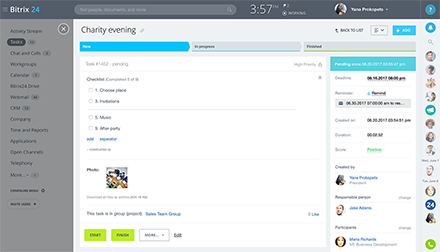
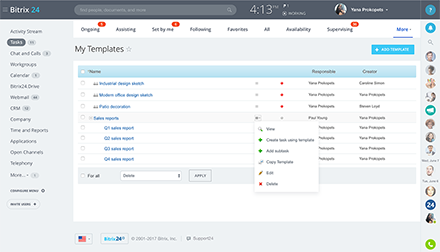
Templates and Automation
Repeating tasks and task templates help you automate regular chores and recurring work routines. Because task templates in Bitrix24 support subtasks and checklists, they are ideal for repeating business processes, such as hiring/terminating employees, onboarding new clients or starting new projects. Automatic task creation triggered by specific events is available via Bitrix24 visual business process designer.
Tasks can be scheduled to repeat in any time interval (i.e. every day, every week, once every 10 days, every Saturday).
Workgroups
Any combination of employees can be collected into a workgroup which contains all the social networking and organizational tools needed to optimize operations and utilize the highly efficient communications methods available in Bitrix24.
Each group is like a miniature intranet, that not only stores important files and data, but which serves as a platform for discussions, tasks, tracking, and planning.
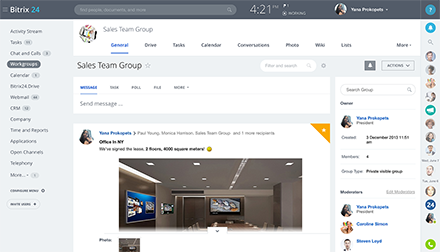
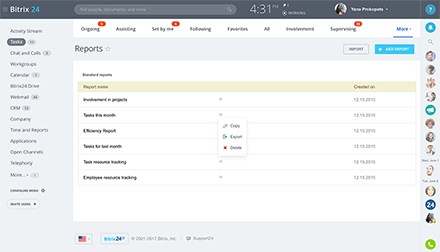
Task Reports
Task Reports are an easy way to learn how much time an employee spends on a certain task or project. Using this convenient tool, you can also see how many tasks are still being worked on, and how many of them are already fulfilled. By default, Task Reports can be submitted on a weekly, monthly, or yearly basis, but you can always set custom reporting dates.
The pre-set Efficiency Report template allows you to evaluate how efficient participants of a project were. For company executives, it can also help you analyze the overall efficiency of a certain department or the whole company. All reports can be easily imported as Excel files.
Report Builder
The report building lets you aggregate, filter, and sort report data and display them to management in the needed form. The universal report builder lets you collect the data fields needed and evaluate effectiveness, work efficiency, and total time spent on projects and tasks.
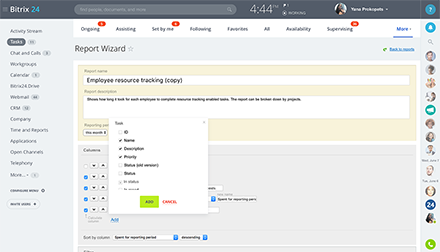
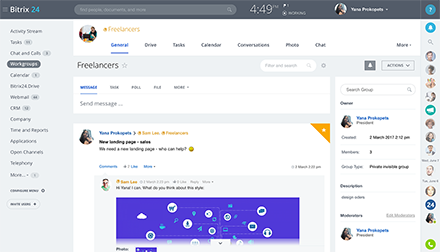
External Users
The Extranet access provides a secure, separate space where workgroups can be shared with external users such as clients, partners, freelancers and other service providers. All of the same functionality is available in Extranet groups, but these third parties are able only to see the workgroups which they are a part of, and the various users of those groups.
